Exploring Mount Stuart on the Isle of Bute: neo-Gothicism
with a lyrical score from Oisín Byrne
Mount Stuart is an extraordinary neo-Gothic mansion on the
Isle of Bute, western Scotland, set in rich & deep landscapes. It is also
home to the Bute Collection of art & design, a vast library of historic texts
& hosts regular contemporary art interventions. Currently, Irish artist Oisín
Byrne presents lyrical explorations in paint, video & song throughout the
grandiose architecture, as Will Jennings explored.
There’s a sense of otherworldliness about Mount Stuart and it begins far, far away from the place itself. It starts with a train that escapes Glasgow’s tenements and takes a journey through the edges of the city and skirts the Firth of Clyde. The train connects to a ferry that crosses the waters towards the Isle of Bute. And then there’s a taxi or bus to take you deeper into the island, past grand waterside houses built by merchants and traders, before continuing its route inland through dense woods.
These shifting landscape thresholds – urban edgeland, escape over water, penetrating the forest – all act to further the feeling of escape from the everyday, and it all works to make the impact of arrival at Mount Stuart even more impressive. The surrounding trees are mature and tall enough to conceal the gothic turrets and chimneys right until the parting of trees to reveal a quite unique and monumental pile.
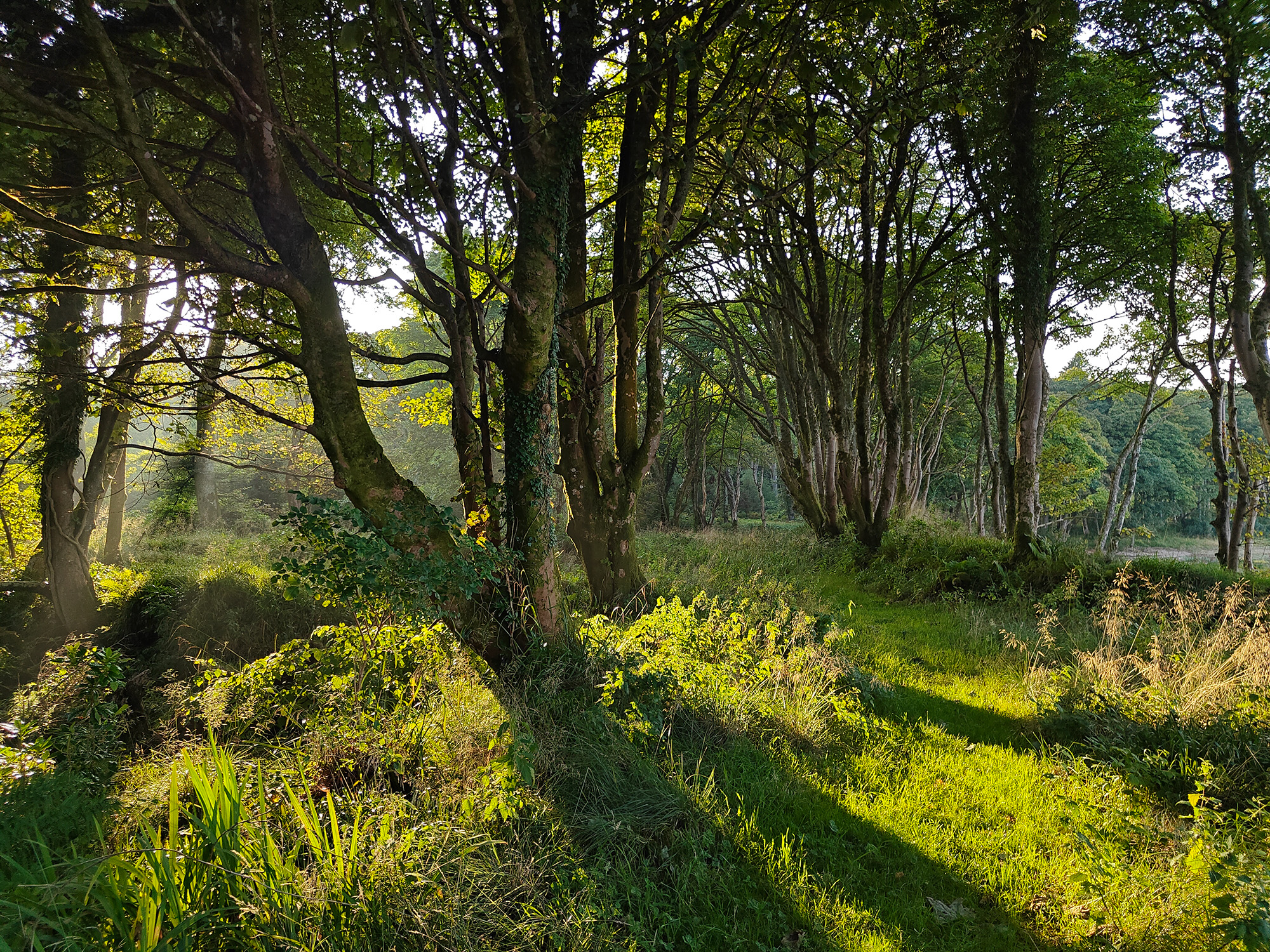

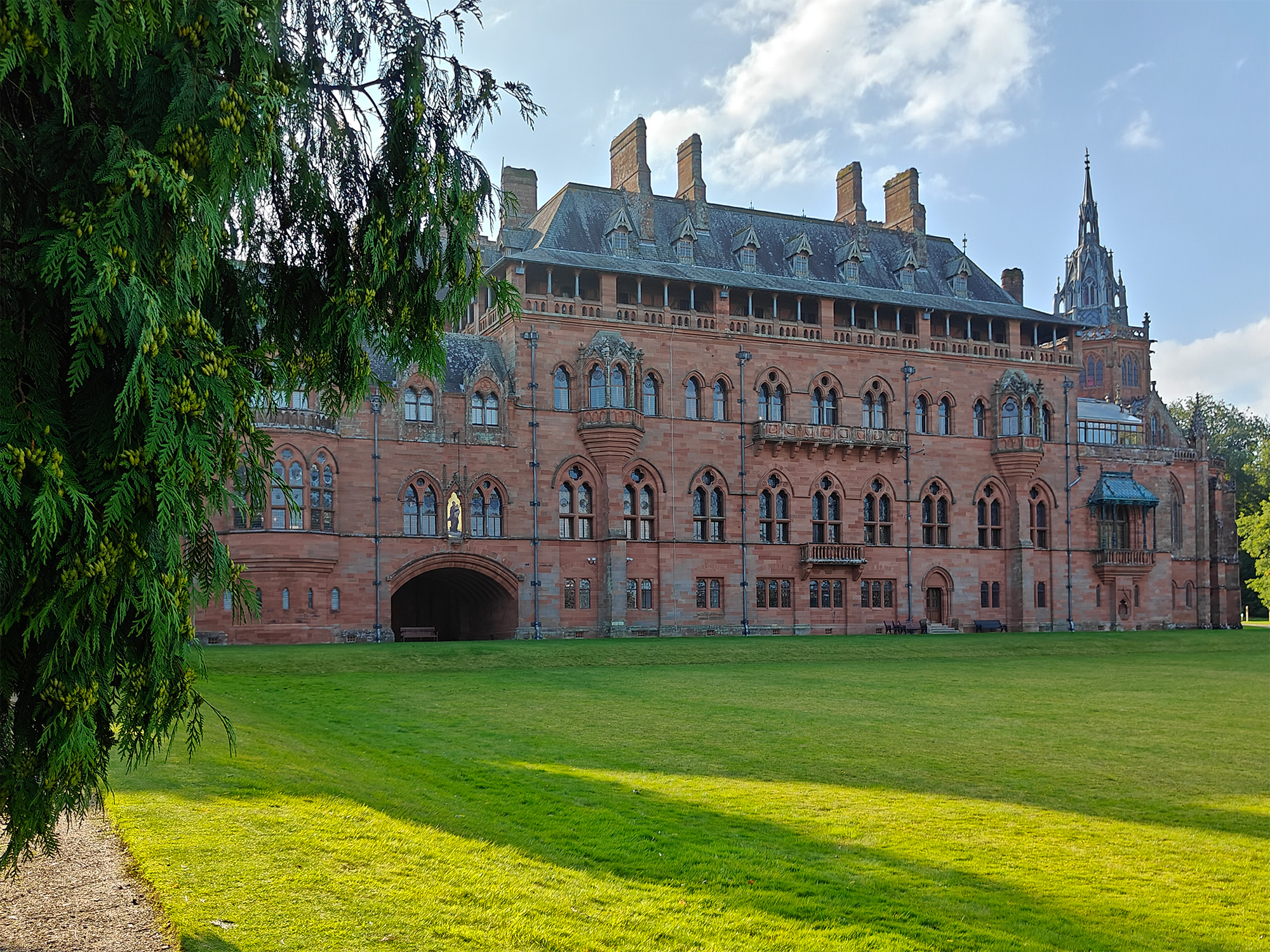
There was a house on the site from 1719, a mannered Georgian property of rhythm and balanced proportions. It was gutted by fire in 1877 and the surviving wings were incorporated into the house that stands today creating unique architectural juxtapositions. Commissioned by the 3rd Marquess of Bute, the design by Robert Rowand Anderson was an architectural explosion compared to the former home, a huge red sandstone neo-Gothic structure with bay windows, vaulted arches, intricate carvings, and gold mosaics inspired by Kiev’s cathedral within bewildering decoration and visual games.
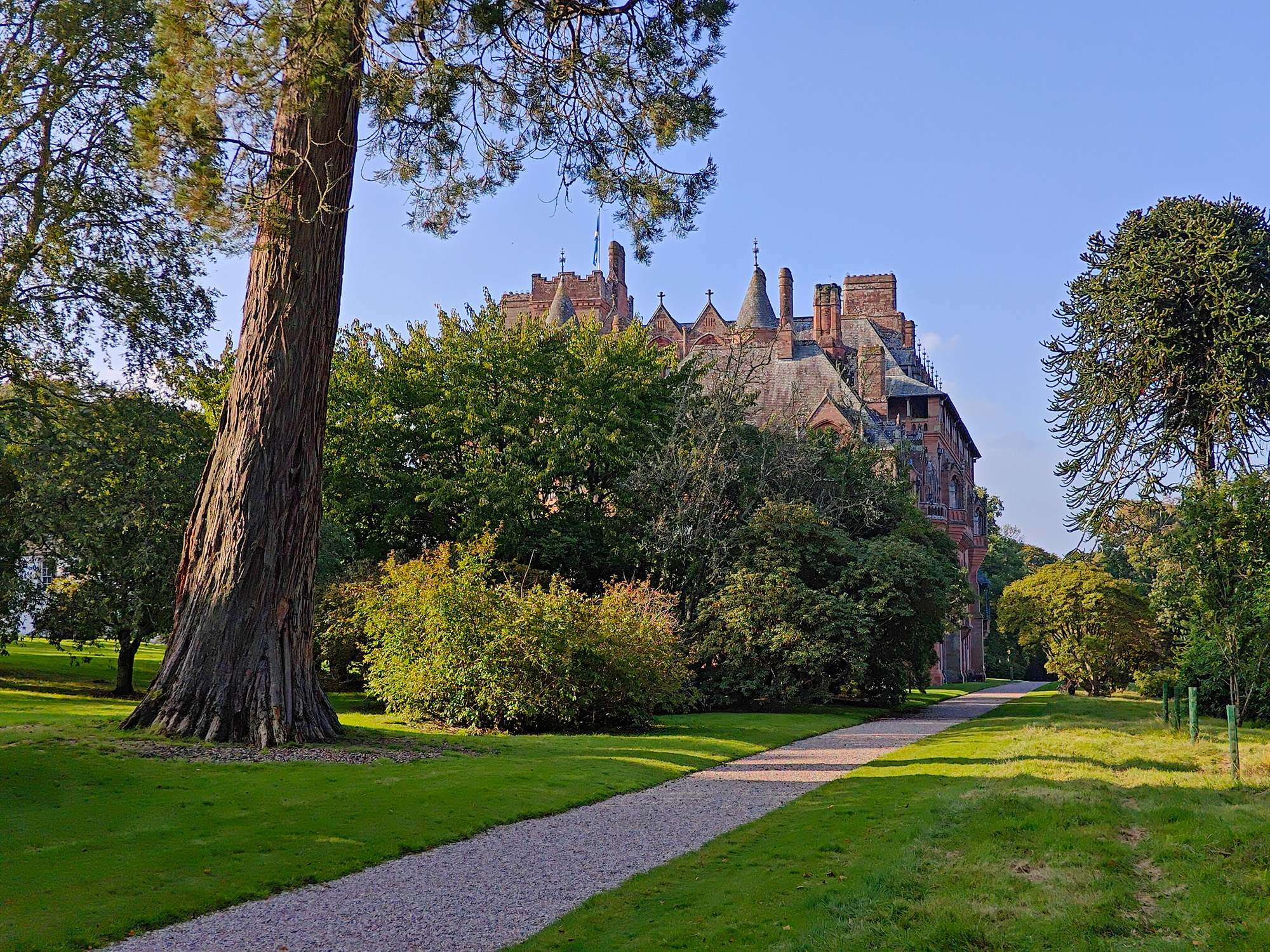
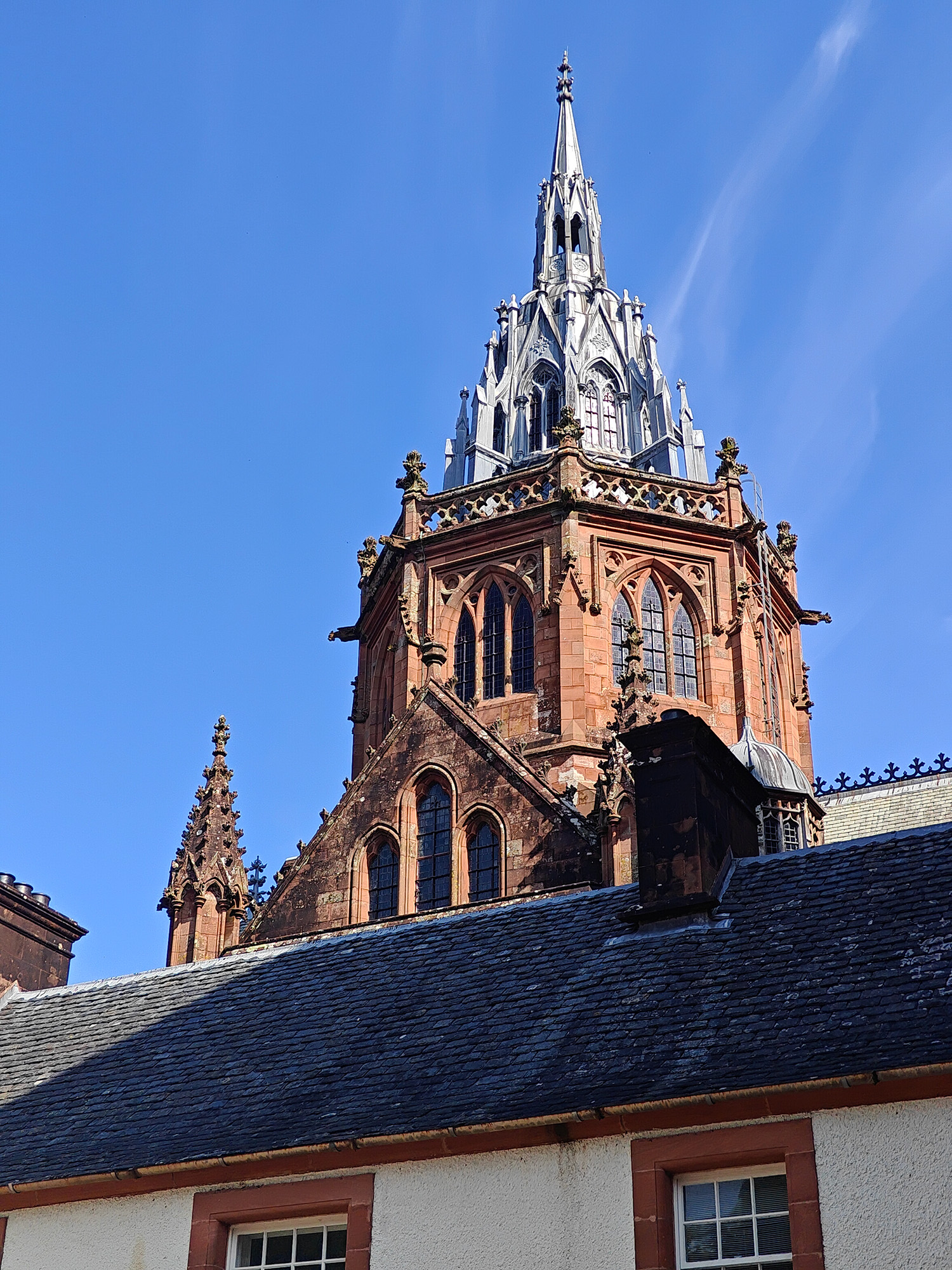

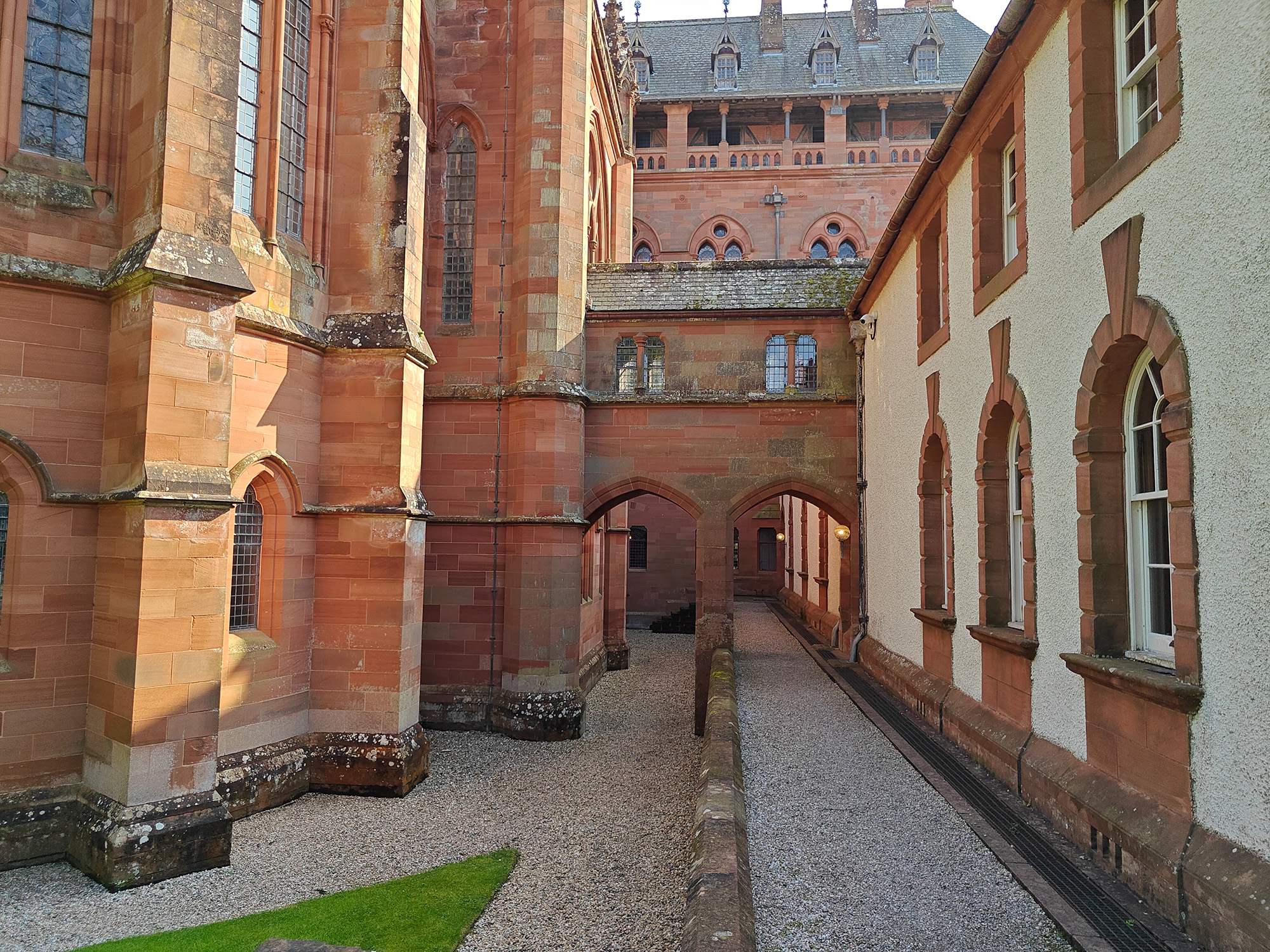
Today, the house is the family seat of the Crichton-Stuarts, with a Trust created in 1989 to take care of the property and opening it and its 300-acre gardens up to the public. Amongst the woods there are three discreet gardens worth hunting out: a sloping 2-acre Rock Garden designed by Victorian landscape architect Thomas Mawson; a Kitchen Garden bursting with fruit and veg, crops used in the public café’s offer; and the Wee Garden, a dense five acres of Southern Hemisphere planting. It's a landscape that asks the visitor to get lost – in the nicest possible way.




The Chair of the Trust is Sophie Crichton-Stuart, and with a keen interest in contemporary art was also the founding Director of Mount Stuart’s Contemporary Visual Arts Programme. Elements of past contemporary art projects can be discovered whilst wondering the estate. Martin Boyce – whose recent Fruitmarket exhibition we featured (see 00195) – recalls a dismantled tennis courts in the estate with his work An Inn For Phantoms Of The Outside And In (2019), recreating it as a “location for the imagination”.
Interrupting the manicured lawn sitting between the house and water sits a bright yellow hut, a remainder from Alberta Whittle’s recent exhibition. A bright green and yellow flat-pack Chattel House, it could be mistaken for a groundsman’s hut or part of the agricultural landscape. A Barbadian structure Chattel Houses were designed to be constructed and dismantled with ease, homeowners not owning the land they erected their property on and at the whim of an employer who may without warning demand they leave. Here, Whittle created a combination of Chattel House and Scottish Bothy, reflecting the artist’s own mixed heritage, as a space of escape, gathering, reflection, and retreat.

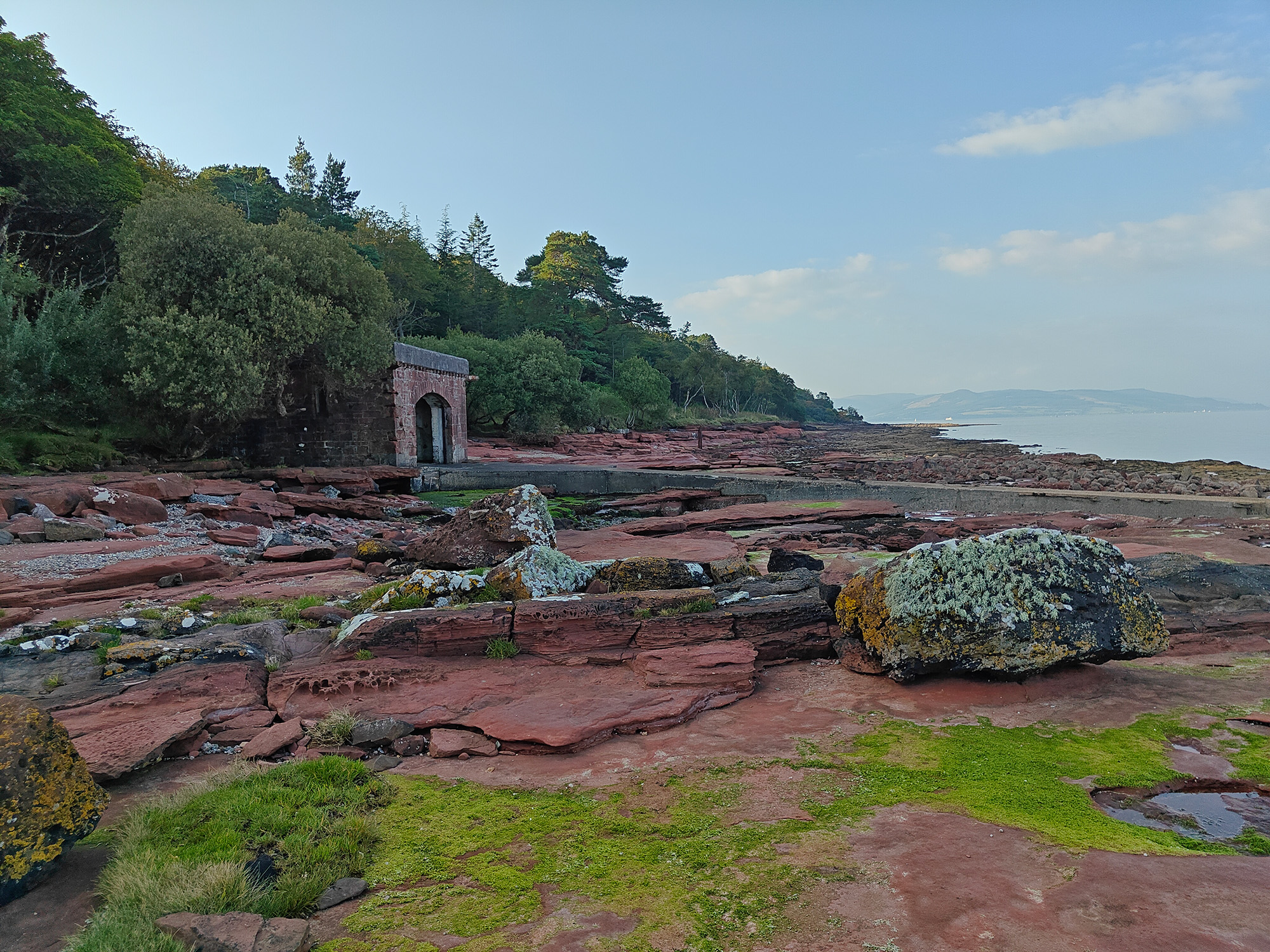


If the landscapes make for rich exploration, unexpected encounter, and a playful combination of nature and construction, then the interior of the house is double the sensorial and visual experience. After entering a relatively modest entrance and the ascent of a few steps into the building, there is a moment of vertiginous audacity to give whiplash to an unprepared visitor. The Marble Hall pulls the eyes three storeys up through the centre of the house, dazzling with stained glass, fluted columns, over 20 types of marble within its walls, and a vaulted ceiling that speaks to the heavens.

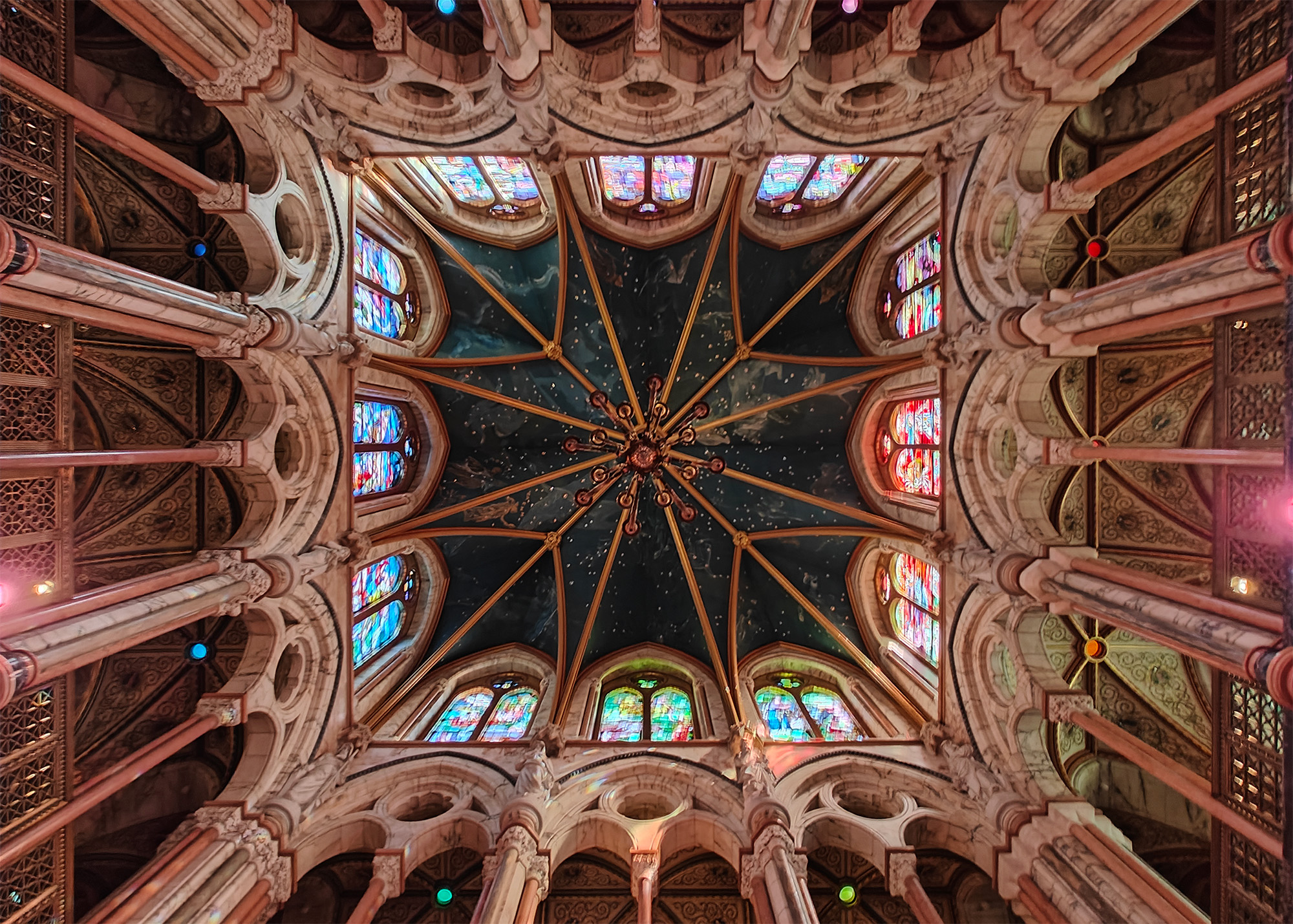


Another vaulted ceiling grows like a palm from a central column around which a grand staircase rises to a suite of first floor rooms rammed with romance, ornament, and unexpected architectural moment. Some of the fireplaces here were salvaged from the ashes of the original Mount Stuart, but everything above and around them is a no-expense-spared celebration of 19th century British craft. Amongst the detail there is evidence of the family and its function as grand domestic space, amongst the artworks and over 6,000 examples of art and decorative objects that make up The Bute Collection, there are family photos, personal objects, and human touch.
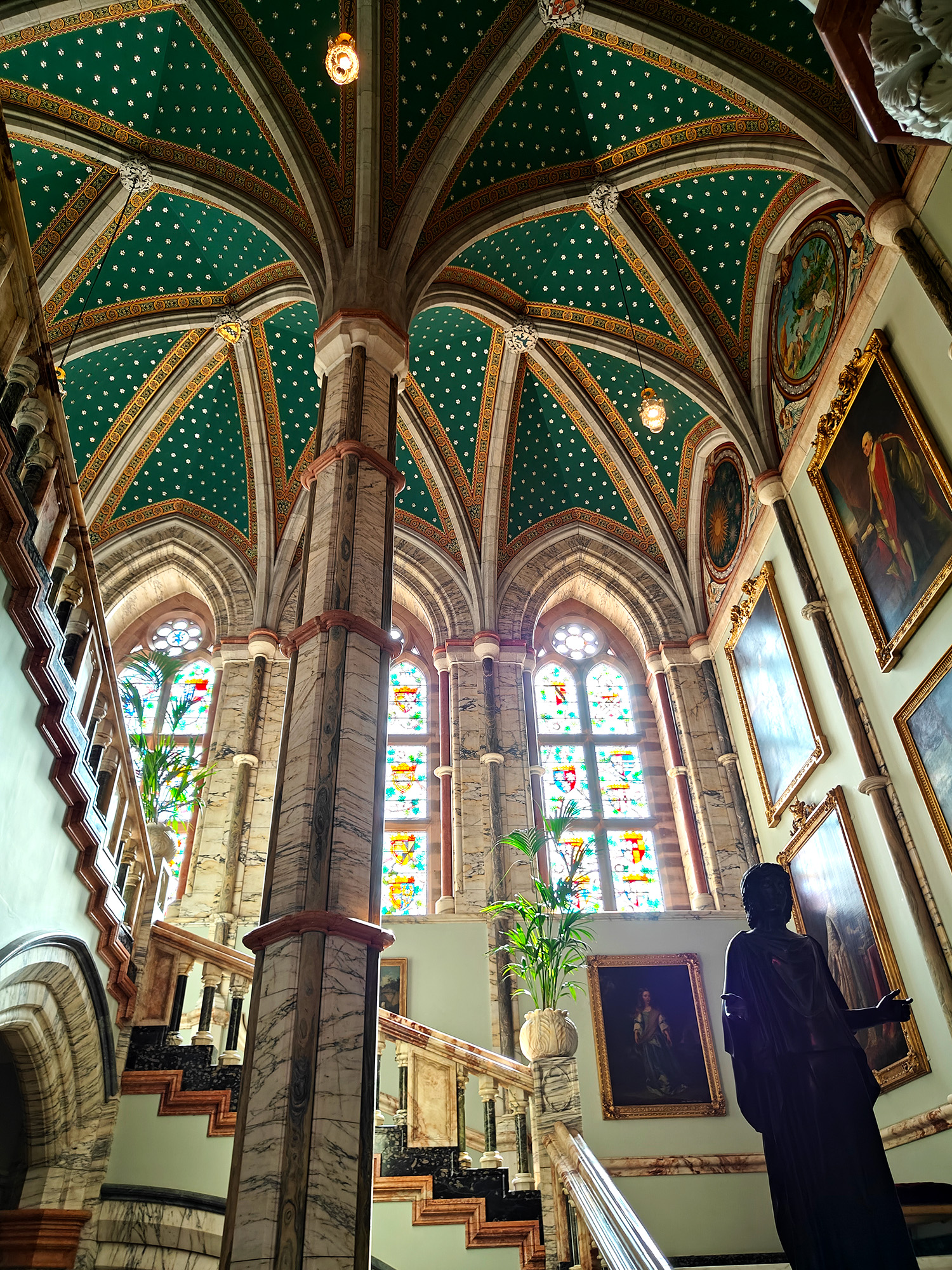

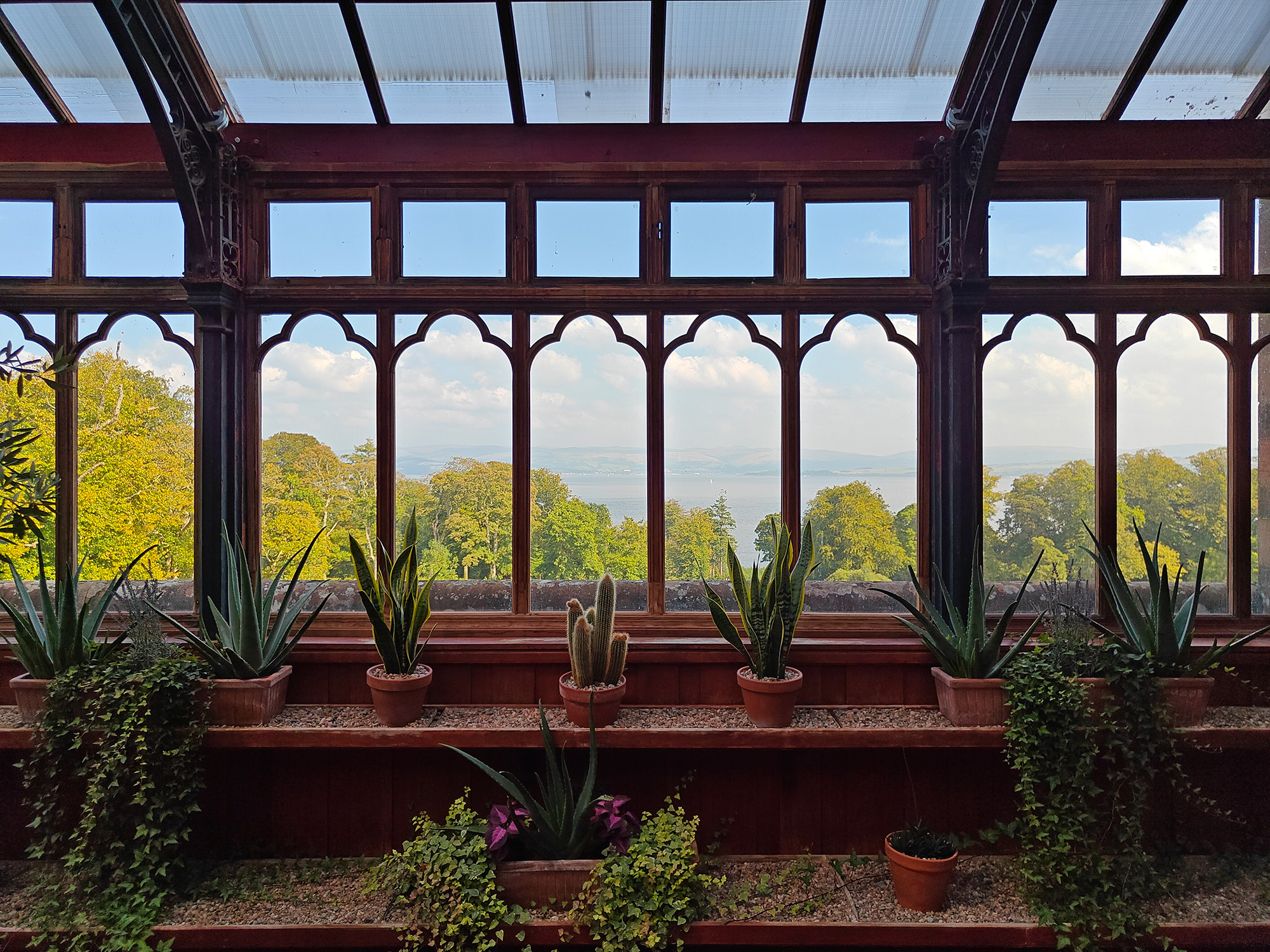
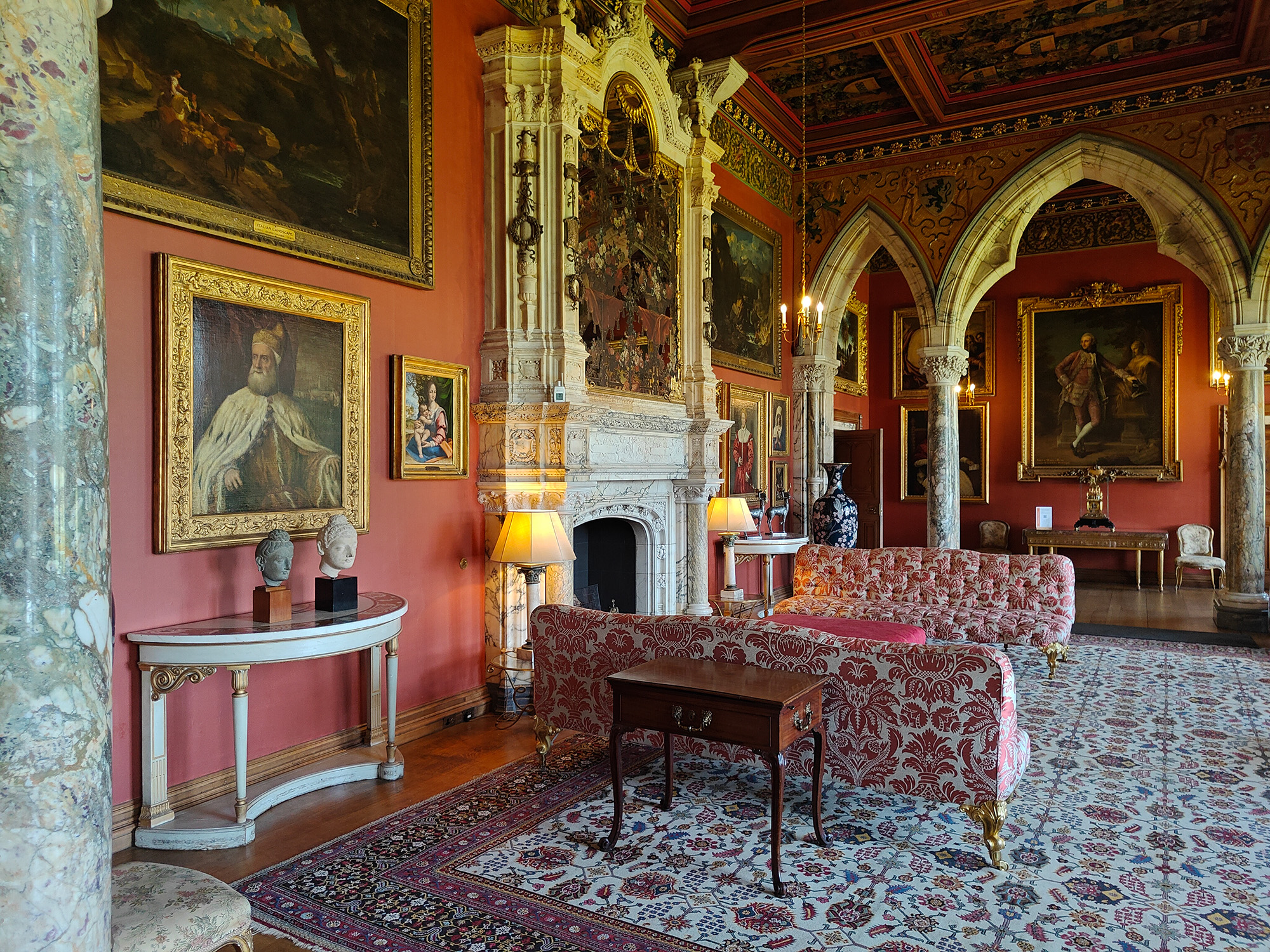
There are books everywhere, each room seemingly making space for stocked shelving. Across the house there are over 27,000 volumes, dating back to the early 1800s when the 2nd Early of Bute began collecting texts for his new library. It is an exquisite mix of publications, including historic Gaelic pamphlets, coloured atlases, embroidered bookbinding, and even a collection of comic books and historic satire, currently forming the neat Comics Uncovered: From Glasgow to Gotham presentation.
Books are also the starting point for Mount Stuart’s current contemporary art takeover by Irish artist, writer, and film-maker Oisín Byrne. Byrne’s works follow on from other projects not only from Whittle and Boyce, but many other artists including Monster Chetwynd, Nathan Coley, Anya Gallaccio, Langlands and Bell, and Sekai Machache – as well as a number of emerging artists who benefit from a residency programme and exhibition.

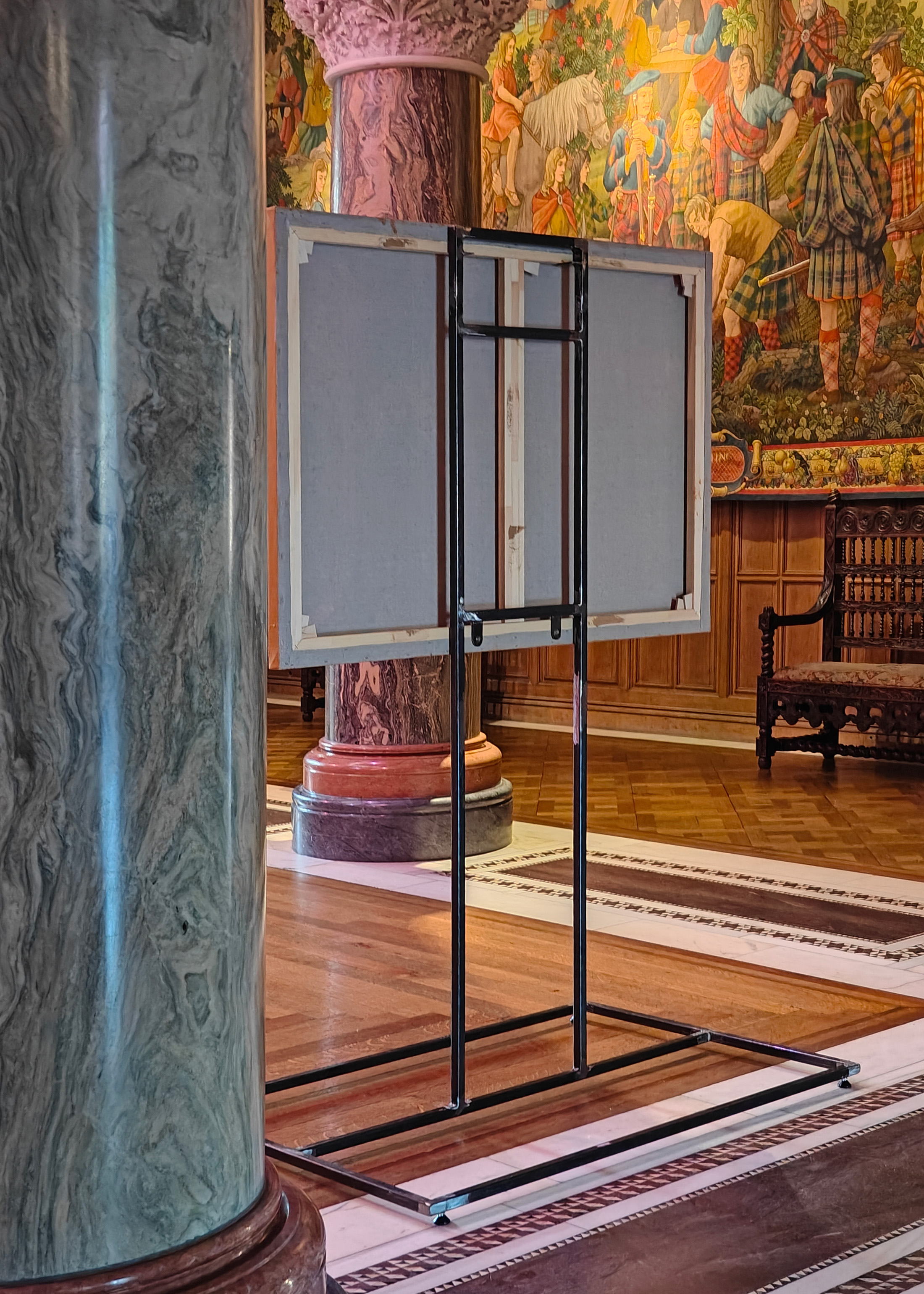
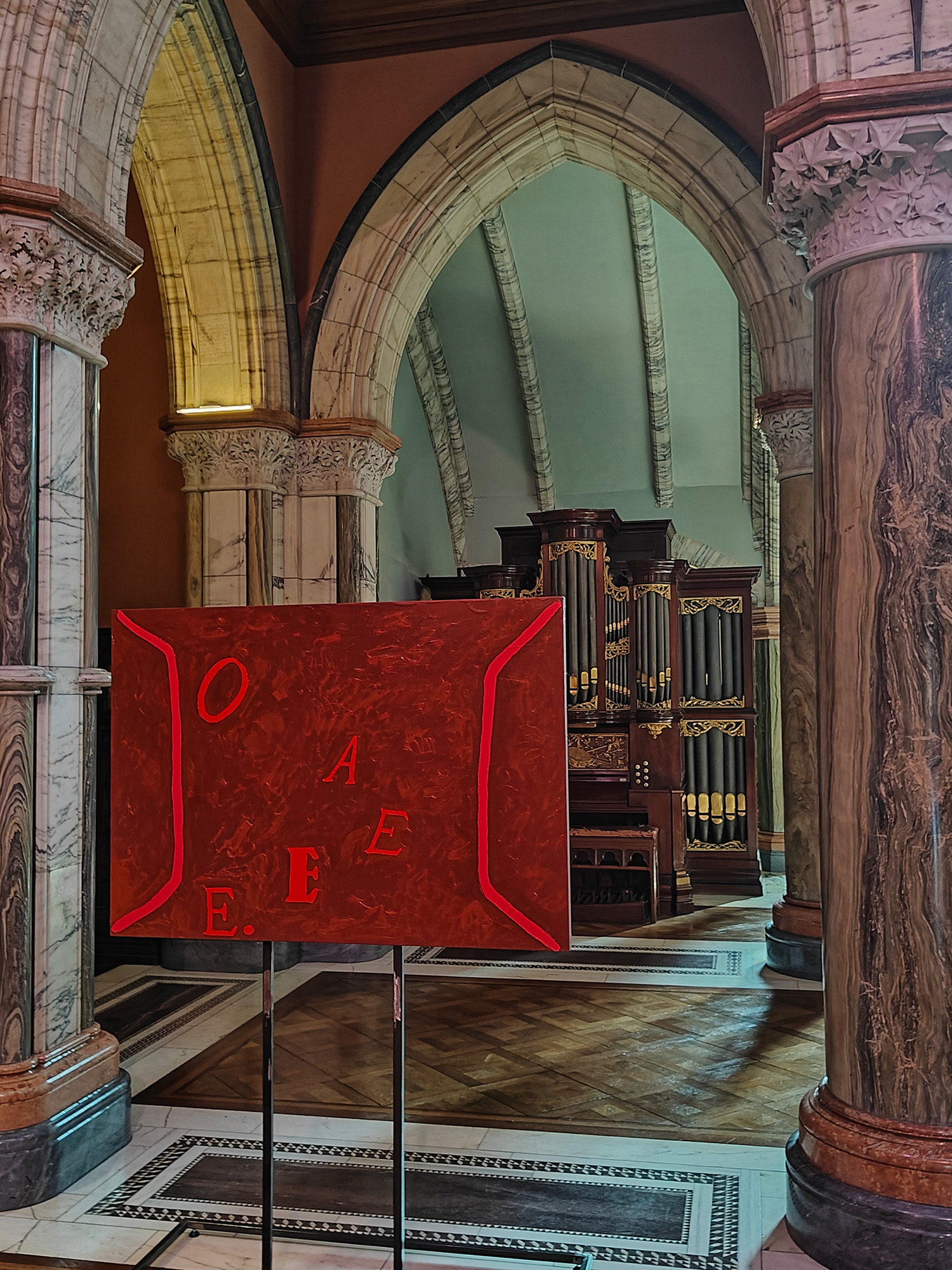
Oisín Byrne has installed new paintings on free-standing, steel frames within the grand Marble Hall and also adorning bookcases in the first floor rooms. Having explored the Mount Stuart library, Byrne has extracted observations, moments, and phrases from historic Gaelic texts. Interested in both written and spoken word, Byrne’s paintings pull fragments and passages to be considered not within the larger volume, but as a standalone moment of writing, reading, and speaking. Letters and punctuation float on a palimpsest-laden canvas, single words – Again!, deadpan, crioch – stand proud, extricated from texts.
Byrne has also explored his own collection of literature to bring interloping phrases and ideas into the exhibited works and, through it, Mount Stuart’s library. Doris Lessing, Susan Sontag, Frank O’Hara, and Flann O’Brien speak to Byrne’s autobiography, queerness, Irishness, artistry. On the wall is a painted rhythm of red lines on a redder background, an abstraction of James Joyce’s notebook editing Ulysses’ drafts.



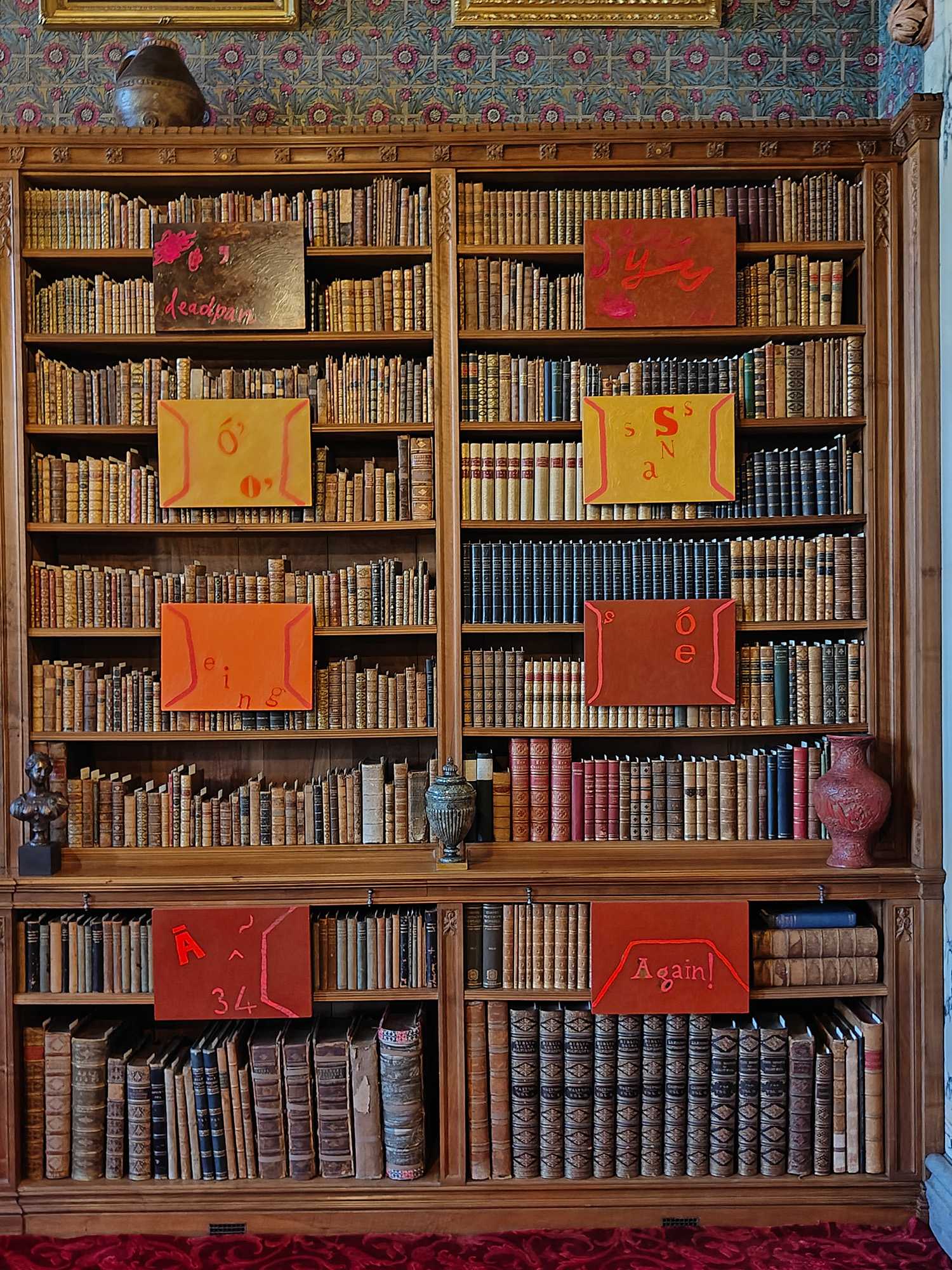
A handwritten scroll cascades over a velvet armchair, a text by Byrne recalling laying in his bath on medication for a broken foot, reading Ukrainian-Brazilian novelist Clarice Lispector, exploring a disassociated, meditative state that the steam, words, and drugs concoct. It is paired with a video work in an adjoining bathroom, Byrne in the bath singing interspersed with glitchy, grabbing recordings of AI translation overlaying Lispector’s words with digital English.



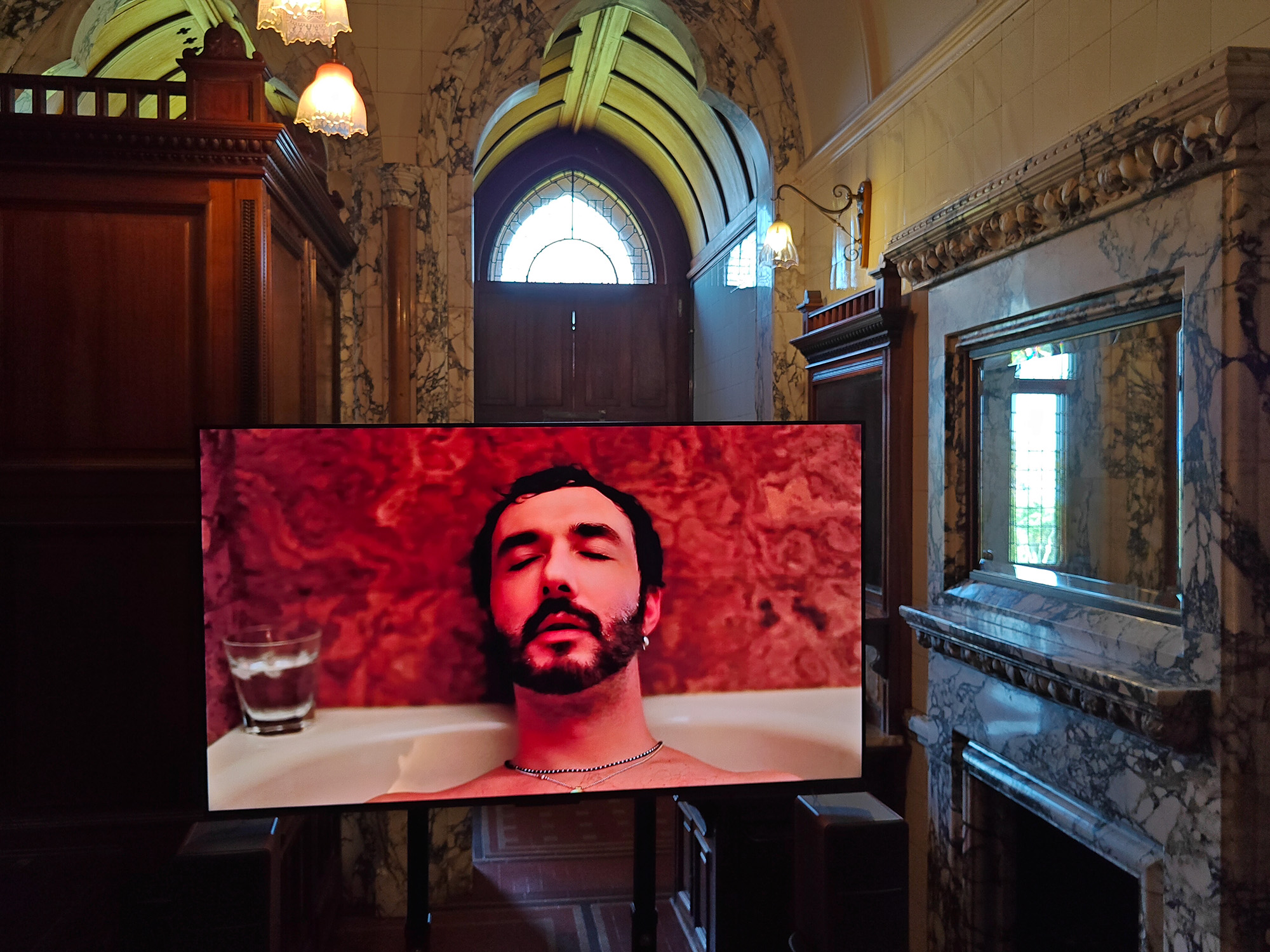
Singing is a central part of Byrne’s exploratory translations and linguistic play. His voice also resonates through Mount Stuart’s poetic Marble Chapel, a glowing space surmounted by a spire tower with a Medieval-Italian-inspired Cosmati floor beneath. A video of Byrne in performative and vulnerable presentation, singing what he terms as “sardonic pop music” formed of textual fragments from his ongoing notebooks, turning thinking to writing to singing in an exploration of self. Carefully positioned paintings stand nearby in a spare presentation working to duet with the architecture rather than croon over it.
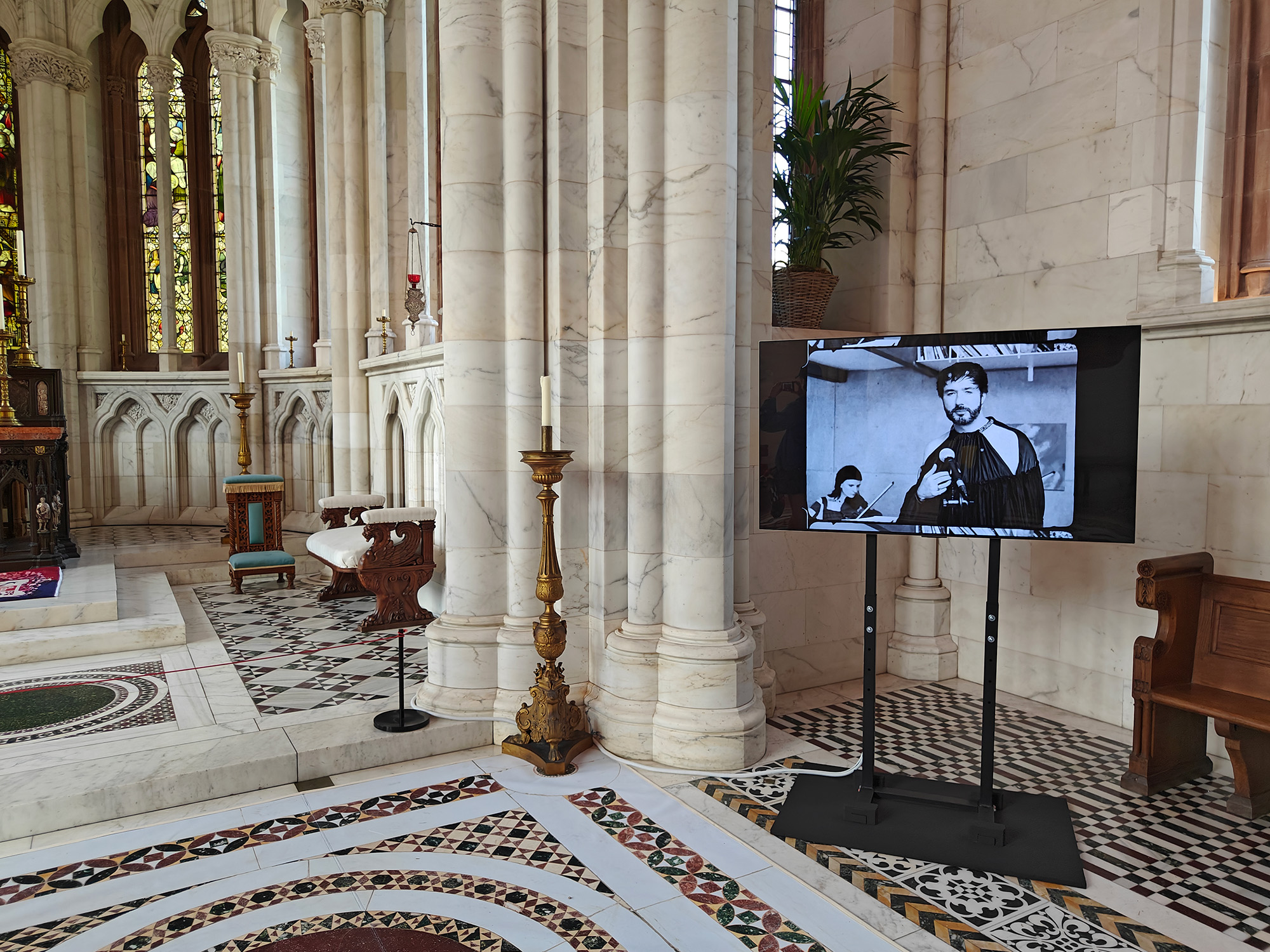
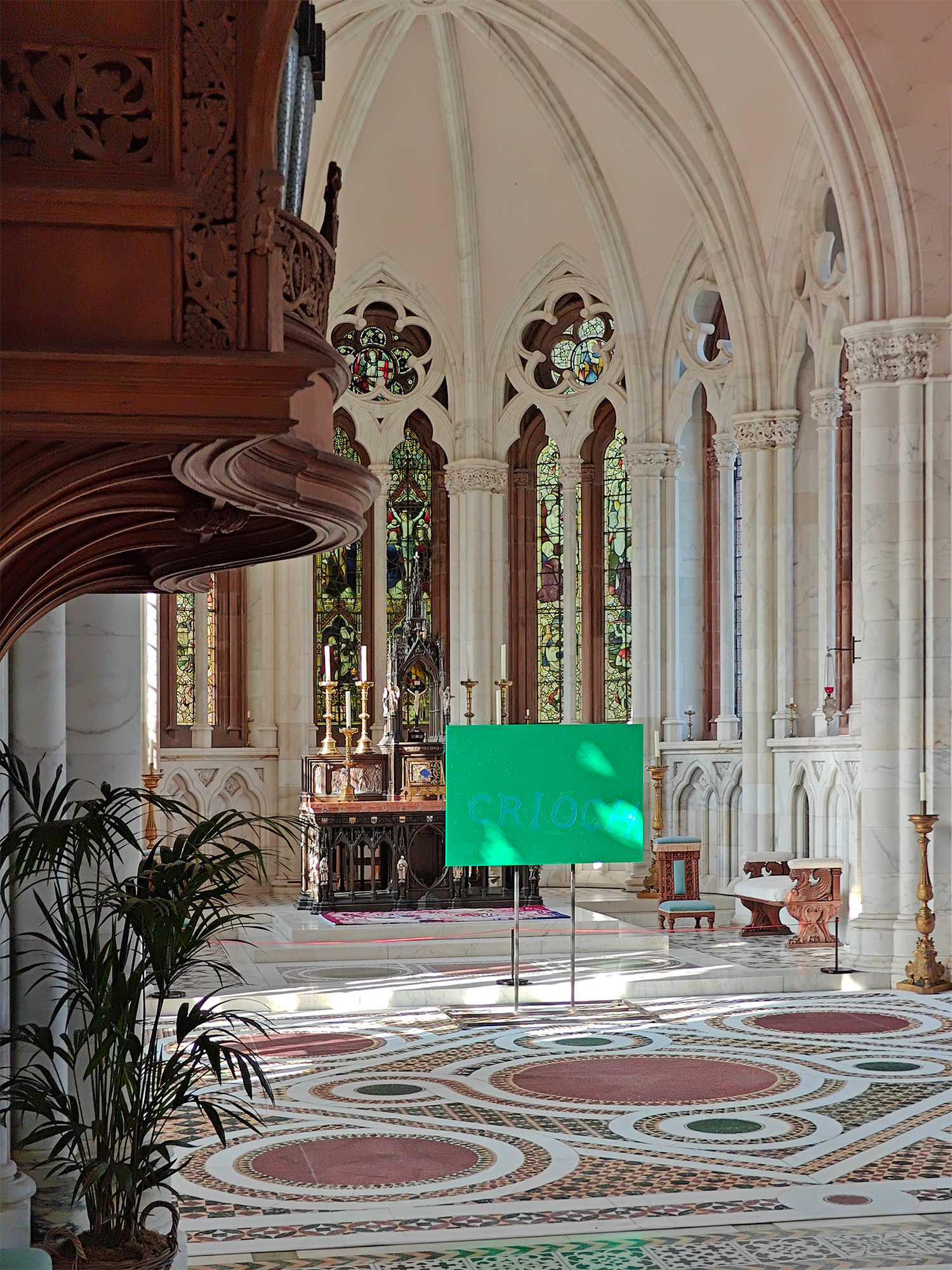


Mount Stuart is a true place of otherness and escape that architecturally, horticulturally, and artistically the house and landscape provides space to breath and question. Despite the scale, grandiosity, décor, detail, and excitement, manages to give space to pause and step back. There seems to be a growing trend for showing contemporary art in British country houses but Mount Stuart are doing it a bit differently to places that put grand sculptures around grounds and rooms. For a place so resplendent and unashamedly showy, it is more a project interested in introspection & looking inwards with poetic nuance and delicate cultural touch, and all the more impressive for it.
Mount Stuart is an extraordinary Neo-Gothic mansion on the Island of Bute.
Since 2001, this unorthodox building has provided both the inspiration and
location for an acclaimed Contemporary Visual Arts Programme. The
Programme enables the Trust to promote and facilitate interest in the
contemporary visual arts and bring exhibitions of international standard to Bute
and Argyll. Each exhibition is complemented by a programme of events,
publications and educational activities. Exhibiting artists have included Martin
Boyce, Ilana Halperin, Sekai Machache, Monster Chetwynd, Martin Boyce,
Abbas Akhavan, Christine Borland.
www.mountstuart.com
Oisín Byrne (b.1983, Dublin) is an Irish artist, writer and film-maker based in
London. Byrne’s work has been exhibited internationally in institutions including
Salzburger Kunstverein, Goldsmiths Centre for Contemporary Art, Kunstinstituut
Melly, The Irish Museum of Modern Art, EVA International, Paris Internationale,
and Princeton University. His writing has been published in books by Pilot Press,
MA Bibliotheque, Eros Press and Bookworks. He is represented by Amanda
Wilkinson Gallery, London.
www.amandawilkinsongallery.com/artists/67-oisin-byrne/works
Will Jennings is a London based writer, visual artist, and educator interested in cities, architecture, and culture. He has written for the RIBA Journal, the Journal of Civic Architecture, Quietus, The Wire, the Guardian, and Icon. He teaches history and theory at UCL Bartlett and Greenwich University, and is director of UK cultural charity Hypha Studios.
www.willjennings.info
London. Byrne’s work has been exhibited internationally in institutions including
Salzburger Kunstverein, Goldsmiths Centre for Contemporary Art, Kunstinstituut
Melly, The Irish Museum of Modern Art, EVA International, Paris Internationale,
and Princeton University. His writing has been published in books by Pilot Press,
MA Bibliotheque, Eros Press and Bookworks. He is represented by Amanda
Wilkinson Gallery, London.
www.amandawilkinsongallery.com/artists/67-oisin-byrne/works
Will Jennings is a London based writer, visual artist, and educator interested in cities, architecture, and culture. He has written for the RIBA Journal, the Journal of Civic Architecture, Quietus, The Wire, the Guardian, and Icon. He teaches history and theory at UCL Bartlett and Greenwich University, and is director of UK cultural charity Hypha Studios.
www.willjennings.info
visit
Mount Stuart house & gardens are open to the public with further details available at: www.mountstuart.com/visiting
images
all photographs
© Will Jennings, except:
Martin Boyce An inn for phantoms of the outside and in (2019) courtsey of the artist and The Modern Institute, Toby Webster ltd. Image
© Keith Hunter.
Alberta Whittle, An Assembly or a ting (2024)
Chattel House, Dimensions variable,
Front Lawn Mount Stuart. Courtesy of the Artist and The Modern Institute/Toby Webster Ltd, Glasgow.
publication date
02 October 2024
tags
Robert Rowand Anderson, Books, Bothy, Martin Boyce, Oisín Byrne, Chattel House, Sophie Crichton Stuart, Gaelic, Garden, Glasgow, Gothic, Gothic revival, Isle of Bute, Will Jennings, James Joyce, Landscape, Language, Library, Clarice Lispector, Thomas Mawson, Mount Stuart, Music, Neo-Gothic, Tennis court, Text, Translation, Alberta Whittle, Writing
all photographs © Will Jennings, except:
Martin Boyce An inn for phantoms of the outside and in (2019) courtsey of the artist and The Modern Institute, Toby Webster ltd. Image © Keith Hunter.
Alberta Whittle, An Assembly or a ting (2024) Chattel House, Dimensions variable, Front Lawn Mount Stuart. Courtesy of the Artist and The Modern Institute/Toby Webster Ltd, Glasgow.


